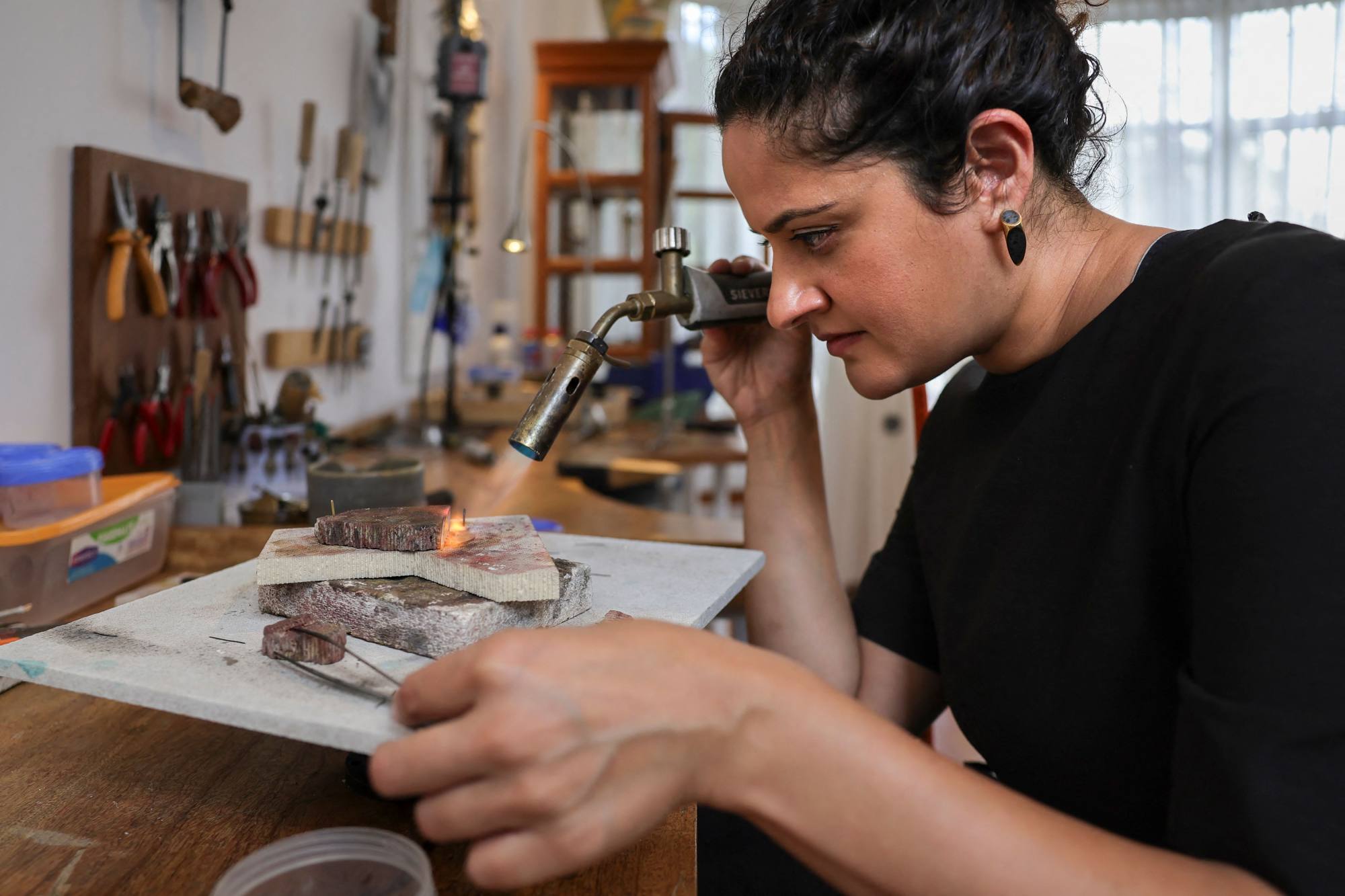But despite earning a university degree in jewellery and silversmithing in the British city of Birmingham and the prestigious Goldsmiths award for best apprentice designer, Shah said it took her years to fully commit to her craft.

A third-generation Kenyan of South Asian origin, she interned at Indian jewellers such as The Gem Palace, whose patrons have included Princess Diana, talk show host Oprah Winfrey and actress Gwyneth Paltrow.
Traditional Indian ideas of jewellery as a luxury investment did not resonate with her. And she was not wholly sure of how to marry her experimental sensibility with commercial pressures.
Why handcrafted jewellery still thrives in the machine age
Why handcrafted jewellery still thrives in the machine age
So Shah joined an advertising firm and spent the next 12 years there, working in London and Nairobi.
“I knew it wasn’t my calling,” she says.
She took a sabbatical during her second pregnancy and began a year-long artist residency at the non-profit organisation Kuona Trust in Nairobi in 2014-15. It was a cathartic period, yet one also “filled with self-doubt”, she says.
“I was worried whether people would like my work … it is hard to accept that you might not be a commercial success, especially when you have spent so many years focused on making money.”

Her body of work ranges from sisal neckpieces to cuffs inlaid with stones and brass earrings that sway with every movement.
A striking departure from the precious metals and gemstones that dominate traditional Indian jewellery, her design process is driven by materials found in Kenya and every piece is made to order.
The result is jewellery that is deeply personal and sometimes political, with prices ranging from US$75 to US$375.
“Not everyone’s going to love my work, not everyone’s going to understand it and that’s OK,” she says, emphasising that she approaches jewellery-making as “a labour of love”, not a business venture.
Wallace Chan a success? Let’s see in 100 years, jewellery artist says
Wallace Chan a success? Let’s see in 100 years, jewellery artist says
Her acclaimed 2019 collection explored salt’s dual nature as a life-giving mineral that is also destructive and corrosive.
“That was the first time I felt like jewellery could be political, like it could be a thread connecting so many things,” she says.
Her latest collection, Memento Mori, was born out of grief, reflecting on the loss of her father in 2021 and their final days together in the Indian Ocean town of Watamu along Kenya’s coast.
Even though her work is sold and celebrated in the West, her focus is firmly on the continent she calls home, both as the inspiration and the market for her refined designs, which are stocked in boutiques in Nigeria, Ghana, South Africa, Ivory Coast and Kenya.
“I feel far more Kenyan than Indian,” she says, urging her South Asian-origin compatriots to embrace integration instead of finding safety in self-segregation, decades after the traumatic 1972 expulsion of South Asians from Uganda.
With recent forays into furniture, her dream is to build a multidisciplinary studio with “predominantly Kenyan” designers.
“It’s important to be able to tell our own story in our own way instead of having a narrative projected onto us.”
